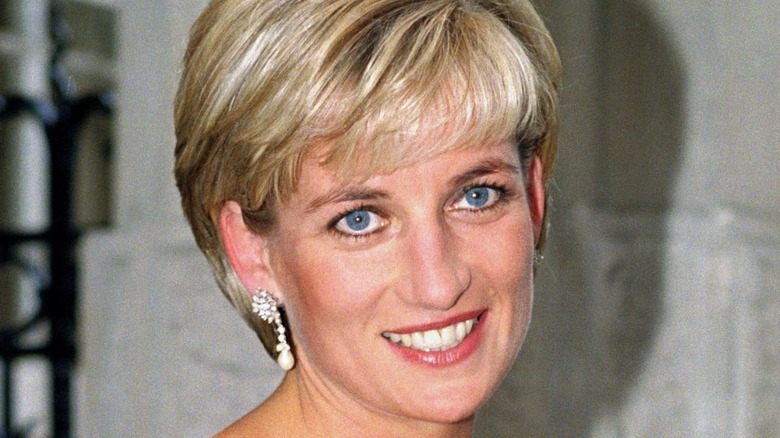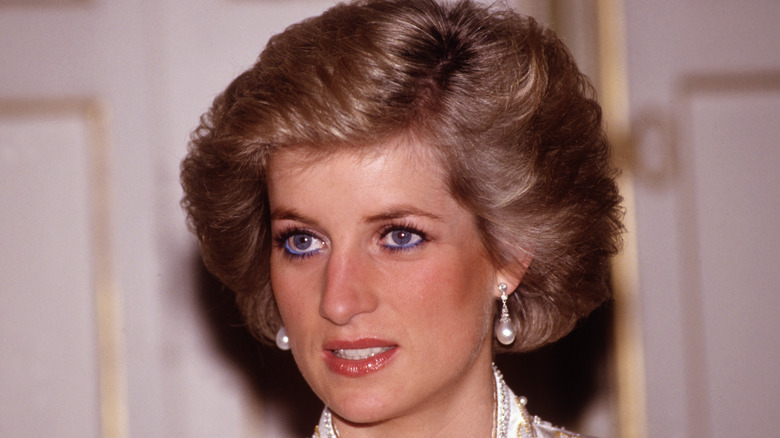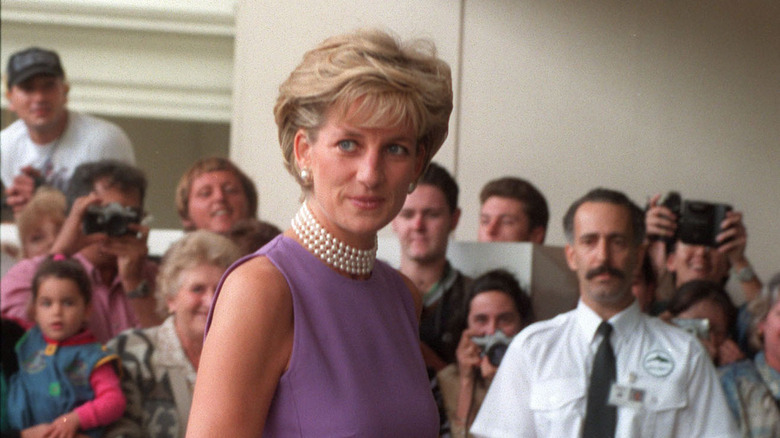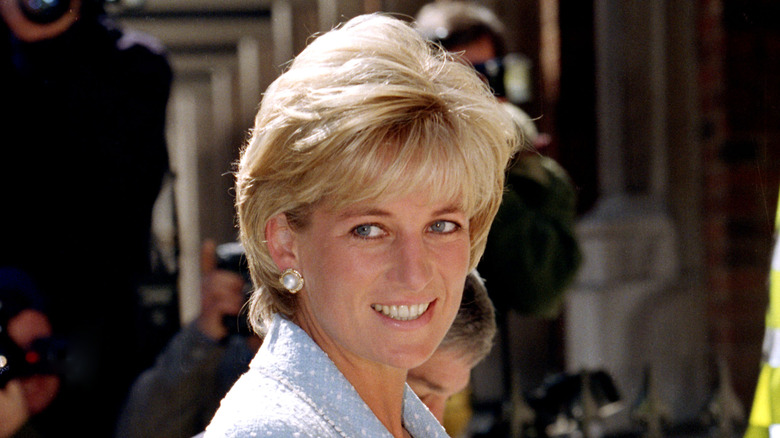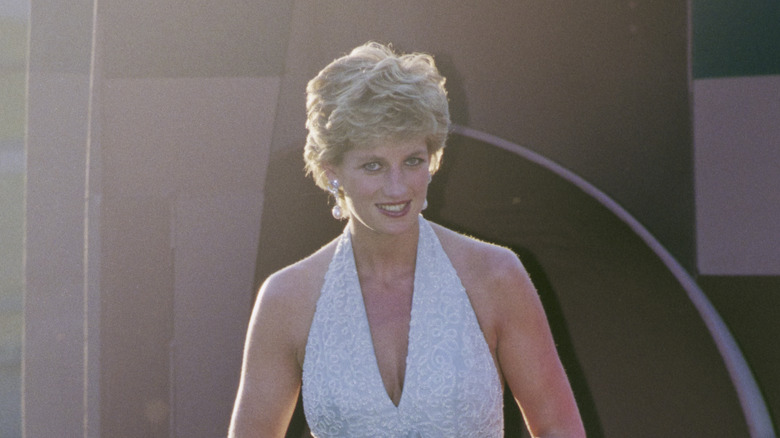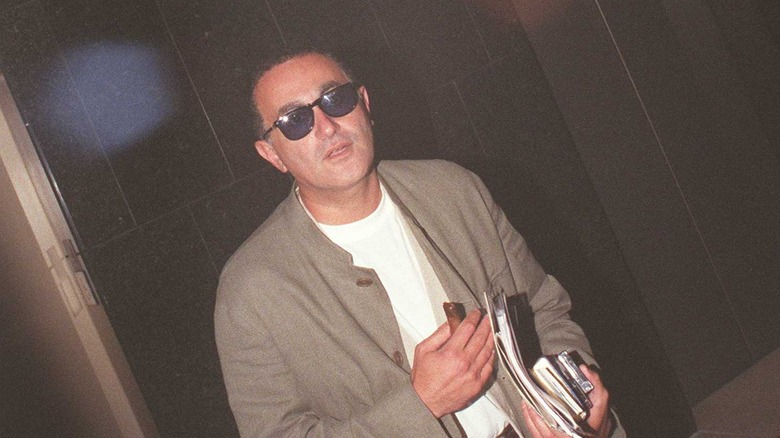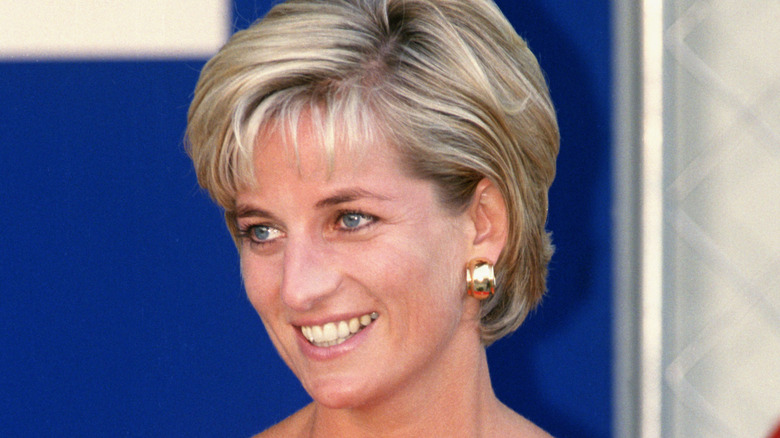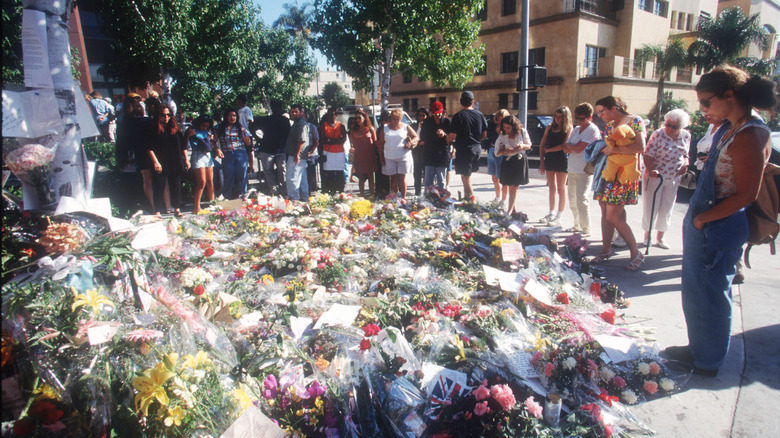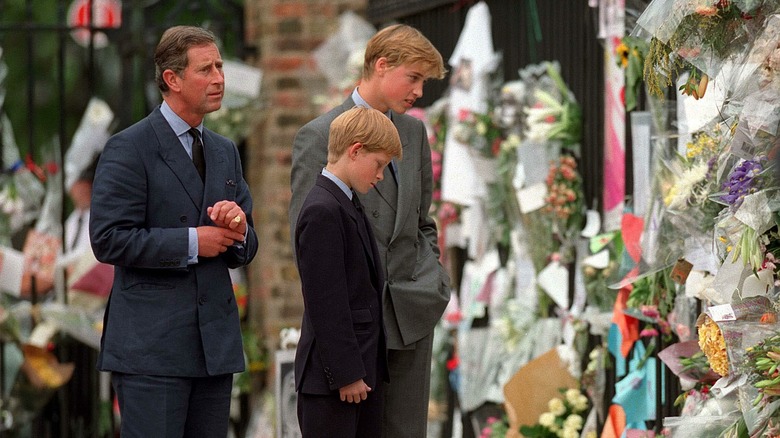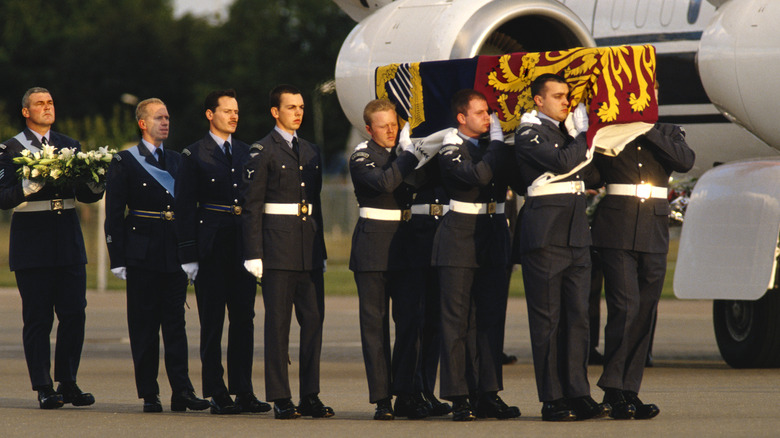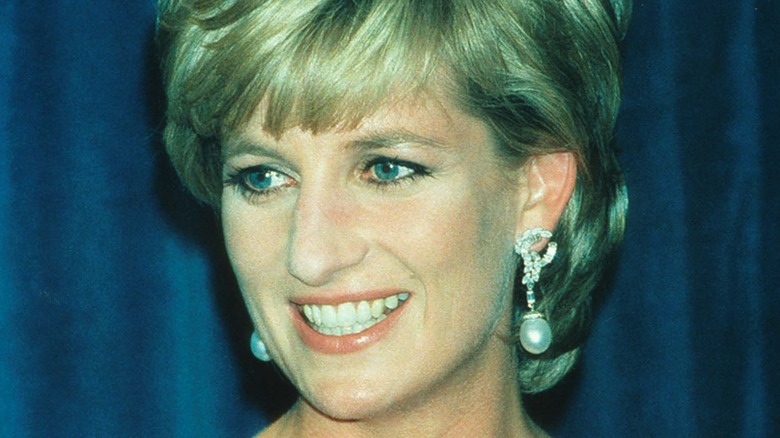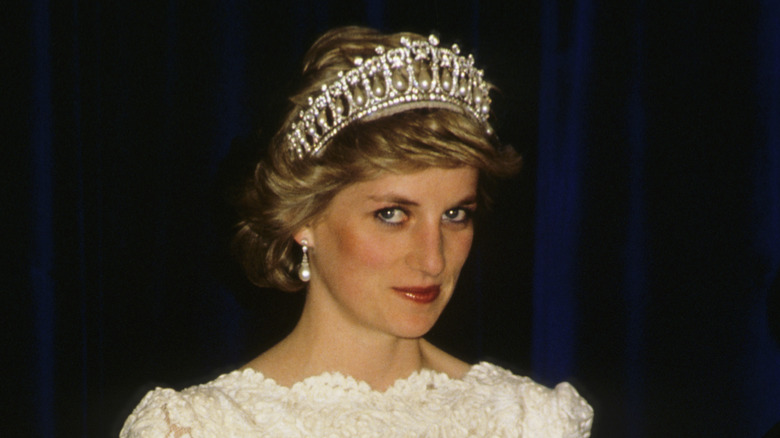What We Know About Princess Diana's Final Moments
For many royal watchers, the late Diana Spencer has been kept alive in a variety of ways. Of course, her sons — Prince William and Prince Harry — make a point of honoring her within their own commentary, charity work, and touching tributes (the unveiling of her commemorative statue a keen example). Their wives, Catherine, Princess of Wales, and Meghan, Duchess of Sussex, have been seen emulating Diana's sense of style, the subtle tributes often making headlines.
And there are other, more expository means by which Diana's truth has been told in modern times. Shows like "The Crown" and explosive films such as "Spencer" have put pressure on the royal family, as Diana's suffering at the hands of the establishment and King Charles III's long-standing affair have been brought back into the popular ether. In many ways, Diana seems just as much a staple in royal commentary as she was 25 years ago.
In the aftermath of her divorce from then-Prince Charles, Diana continued to be a fixture of the royal scene and devoted her time to activist work. The once "Shy Di" had blossomed into a bonafide celebrity, and her young relationship with Harrod's heir Dodi Fayed was getting plenty of attention. Her glass castle shattered, however, in Paris in August 1997. After Diana and Dodi left the Ritz hotel in the late evening, their vehicle crashed in the Pont de l'Alma tunnel. Here's everything we know about the final moments of the "people's princess."
Diana's dinner arrangements were foiled on the night of her death
When Diana Spencer and Dodi Fayed touched down in Paris in August 1997, they made their way to the Ritz hotel in the center of the city. As noted by the Mirror, the couple intended to have dinner at the Benoit restaurant, a Michelin-star eatery, but their plans were foiled. After leaving the hotel around 7 p.m., Diana and Dodi were swarmed by about 30 paparazzi on the popular Champs-Élysées avenue, prompting them to return to the hotel.
By 10 p.m., Diana and Dodi had found a table at the Ritz's L'Espadon restaurant. It wasn't long, however, before Dodi became suspicious of the other restaurant's patrons, fearing that they, too, were photographers trying to get a glimpse of the royal. In an abundance of caution, Diana and Dodi returned to their suite and had dinner delivered — Diana was said to have ordered Dover sole, though it certainly wasn't the dinner she had originally envisioned.
Dodi and Diana planned to leave the Ritz by using decoy cars, with their own car parked at the back for an easy escape. AP News noted in its extensive timeline of the evening that Diana seemed upset as she exited via a revolving door.
Diana felt uneasy about the paparazzi
In an extensive timeline of Diana Spencer's final evening compiled by AP News, it was revealed that the royal was wary of the paparazzi in Paris from the time she arrived in the city. Paul Handley-Greaves, the head of Dodi Fayed's security team, conveyed that the former Princess of Wales was convinced that something terrible would happen during their stay in the City of Lights and relayed her worries to the security team.
When leaving their suite after dinner, Diana and Dodi made a point of discussing "the concern that the princess had that something would happen," Handley-Greaves said. "Earlier on in the day, she had expressed concern to bodyguard Trevor Rees-Jones at the foolhardiness of the motorcycle riders, not for the safety of the vehicle she was traveling in. She expressed concern that the erratic manner in which they were driving might result in one of them falling under the wheels, either of the lead car or the backup."
Diana's concerns about her safety and the faultiness of a vehicle were not new — in fact, she had written in an October 1995 letter that she was fearful someone would tamper with the brakes in her car. "My husband is planning an accident in my car. Brake failure and serious head injury ..." Diana wrote in part at the time.
The couple had decided to escape to Dodi's apartment when the fatal crash occurred
Despite their earlier concerns on the evening in question, Diana Spencer and Dodi Fayed decided to leave the Ritz hotel and spend the rest of the evening in Dodi's Paris apartment, the Mirror details. At about 11:30 p.m., the couple made their way to the entrance of the hotel, with driver Henri Paul instructing two decoy cars to leave the front of the Ritz to confuse the paparazzi. The couple's actual car was waiting for them at the back entrance to the hotel, and that's where Diana, Dodi, Paul, and bodyguard Trevor Rees-Jones loaded in for the drive.
In the aftermath of the fatal crash, more details about the car in question would emerge. As detailed by AP News, the vehicle Diana and Dodi rode in was a rented Mercedes from the Etoile Limousine Company. While it was certainly luxurious and known for its smooth ride, limousine driver Jean-Pierre Bretton told the publication that it wasn't an ideal vehicle for navigating bustling city traffic due to its weight. "This isn't the kind of car you do slalom in," explained Bretton, who has picked up his fair share of well-to-do clients from the Ritz.
There are continued questions about the driver's level of intoxication
When Diana Spencer and Dodi Fayed loaded into the Mercedes, their driver, Henri Paul, was legally drunk. While reports about his level of intoxication have been rampantly different over the years, AP News noted that in his autopsy results, Paul had a blood-alcohol level that was at least three times over the legal limit. However, former bartender Tony Poer, who had often seen Paul at the bar where he worked, told AP News that he "never saw [Paul] extremely drunk," confessing that Paul had even driven him home on more than one occasion.
While Paul's autopsy did show some degree of alcohol consumption, Express noted that France's laws regarding drinking and driving are incredibly strict. The maximum level of blood alcohol a person can have while driving in the country is 0.5mg/ml, as compared to Britain's 0.8mg/ml. Furthermore, Diana's former butler, Paul Burrell, insisted that the driver would not have gotten behind the wheel if he had been in a compromised state.
"Why would [bodyguard Trevor Rees-Jones] let a drunk man drive him? Let alone Diana and Dodi?" Burrell questioned, per Express. "That's rubbish. I think there was a mixing up of toxicology results." Such questions have plagued Diana's final moments in the decades since.
Dodi was killed immediately, whereas Diana survived the initial blow
As Diana Spencer and Dodi Fayed left the Ritz hotel, their vehicle made its way to the Pont de l'Alma tunnel in a likely attempt to avoid traffic, AP News noted. Both Diana and Dodi were riding without seatbelts when the car entered the tunnel — only bodyguard Trevor Rees-Jones, who was riding in the front seat, was wearing one.
As the car entered the lighted tunnel at a dangerous speed — some accounts have clocked driver Henri Paul's speed at 65 miles per hour, about twice the limit of the tunnel — it spun out of control, violently hitting a concrete pillar. The car rolled over and "rebounded" off the right wall, continuing to spin. When it finally stopped moving, the Mercedes was facing the direction of the tunnel in which it entered, with Paul "slumped over the horn." Dodi — who was sitting behind the driver — was killed immediately, as was Paul, who was said to have had pieces of the radiator embedded in his body due to the crash's intense velocity.
Two eyewitnesses told AP News that they ran into the tunnel upon hearing the impact, as did the paparazzi, who were instantly "swarming" the wrecked car and taking photographs. Diana was still alive after the crash, with Dr. Frederic Mailliez — who tended to her — expressing that she was "unconscious, moaning, and gesturing in every direction."
Diana's last words are just as heartbreaking today
Driver Henri Paul and Dodi Fayed were killed upon impact at the scene of the crash, but Diana Spencer was still alive when first responders arrived. Dr. Richard Shepherd detailed her injuries to the Daily Mail.
"She actually suffered just a few broken bones and a small chest injury — but this included a tiny tear in a vein in one of her lungs," Dr. Shepherd explained. "To the ambulance services, she initially seemed injured but stable, particularly as she was able to communicate. While everyone focused on [Trevor] Rees-Jones, however, the vein was slowly bleeding into her chest."
It's still unclear why it took a number of hours between the initial crash and Diana's admittance to the hospital. However, a firefighter who tended to Diana after the crash shared her final words: "My God, what's happened?" she was reported to have said, the Independent noted.
Dr. Shepherd maintains that if Diana had been wearing a seatbelt, her injuries likely would not have been fatal. "Diana's death is a classic example of the way we say, after almost every death: if only," he said. "If only she had been wearing a seat belt. Had she been restrained, she would probably have appeared in public two days later with a black eye, perhaps a bit breathless from the fractured ribs, and with a broken arm in a sling."
The people's princess was declared dead about four hours after the crash
After the initial crash at about 12:25 a.m., calls to emergency personnel were made. It wasn't until 12:40 a.m. that firefighters arrived on the scene, and AP News detailed that they found the car as a "crumpled mass of metal and glass." Six photographers and one motorcyclist were arrested on the scene, and their camera equipment was confiscated. Diana, still alive, had to be cut out of the vehicle and was finally lifted from the back of the car.
It wasn't until 2 a.m. that Diana arrived at the Hospital La Pitié Salpêtrière, and the aforementioned injury to the vein in her lung had grown in severity. She was "bleeding heavily from the chest" as she was admitted to the hospital, where she soon after went into cardiac arrest. Doctors were able to close the wound in the pulmonary vein and spent the next two hours trying to revive her. Despite using both chest massage and direct massage to the heart, doctors were unable to resuscitate her. Diana was declared dead at 4 a.m. and the news broke in the United Kingdom shortly thereafter.
"The death of the Princess of Wales fills us all with shock and deep grief," British ambassador Michael Jay said at a 6 a.m. press conference, surrounded by doctors. It was a death felt around the world.
William and Harry found out about their mother's death the following morning
Diana Spencer's sons, Prince William and Prince Harry, were just 15 and 12 years old when their beloved mother died. Both remained relatively quiet on the subject in the years that followed, the image of them following her coffin etched into the world's collective memory. But in the BBC documentary "Diana, 7 Days," both William and Harry opened up about the immediate aftermath of her death, explaining that they were in Balmoral in Scotland when they received the heartbreaking news.
"One of the hardest things for a parent to have to do is to tell your children that your other parent has died," Harry said in the documentary, ABC News noted, expressing his own sense of sympathy for his father's responsibility at the time. William shared that he simply froze upon hearing his mother had died. "I remember just feeling completely numb, disorientated, dizzy," William said. "You feel very, very confused. And you keep asking yourself, 'Why me?' All the time, 'Why? What have I done? Why? Why has this happened to us?'"
The princes remained at Balmoral in the immediate aftermath of Diana's death, with Queen Elizabeth II "shielding" them from the press and the public. She was criticized for the move — and for not publicly expressing her grief sooner — but William and Harry stood by her decision to let them grieve behind closed doors, per ABC News.
Charles traveled to Paris to collect Diana's body
Though Diana Spencer and then-Prince Charles were divorced, their relationship had actually improved after they went their separate ways. In many ways, it felt like the beginning of a new era for the royals, but that glimmer of hope was shattered by Diana's untimely death. Just 12 hours after she was declared dead, Charles touched down in Paris to collect her body, AP News reported at the time, looking incredibly "somber" as he escorted her coffin from the hospital.
Charles was joined in Paris by Diana's sisters, Sarah and Jane, who were described as "grief-stricken" as they were seen in public for the first time since her death. Charles was met by the then-president of France, Jacques Chirac, and his wife, Bernadette, as he gathered the coffin of his ex-wife and the mother of his children. About 30 minutes later, Diana's coffin — adorned with the personal flag of the royal family — was loaded into the hearse and taken to an airfield just outside of Paris. Charles, Diana's sisters, and the coffin of the people's princess then took off for the United Kingdom.
Diana's funeral was held on September 6, 1997; in a stunning display of respect, Queen Elizabeth II curtsied as Diana's coffin passed her.
An inquest was launched into the truth about the crash
Questions about Diana Spencer's tragic death ravaged the world in the aftermath of the crash — many of which remain unanswered to this day. A formal inquest was launched into the crash in 2008, with both British and French investigators combing over the details of the night in question. As noted by The Telegraph, it took six months of "claims and counterclaims," 250 witnesses, and more expository work before French and British authorities estimated that Henri Paul was the person responsible for the crash due to his prior use of alcohol and antidepressants, which caused him to lose control of the vehicle.
An inquest jury at the Royal Courts of Justice in London delivered the verdicts of "unlawful killing" of both Diana and Dodi Fayed, The Telegraph detailed, which is comparable to manslaughter. The inquest jury estimated that both Paul and the paparazzi at the scene were responsible for the crash, as their "gross negligence" allowed the car to spiral out of control. The jury further detailed that both Diana and Dodi might have survived the crash if they had been wearing seatbelts.
Conspiracy theories were (and still are) rampant about Diana's death
Like many high-profile tragedies, conspiracy theories have ravaged Diana Spencer's life and death, The Telegraph detailed — but perhaps no one has been more vocal about the questionable deaths of Diana and Dodi Fayed than Dodi's father, Mohamed Al-Fayed. Mohamed has maintained his position that Dodi and Diana were murdered by MI6 agents at the request of Prince Philip, Queen Elizabeth II's late husband.
Mohamed has further pointed out — in an attempt to bolster his perspective — that none of the 14 CCTV cameras in the Pont de l'Alma tunnel were recording on the night of the crash. The Independent confirmed his estimation in 2006, reporting that no recorded footage of the collision existed despite the presence of cameras.
Other conspiracy theories have circulated about the events of the night in question. Some have estimated that the royal family ordered Diana's death, stemming from the notion that she may have been pregnant, per The Telegraph.
Despite the many truths, half-truths, and questions regarding Diana's death, many, if not all, can agree that the tragic loss of Diana marked the end of an era for the royal family. While she may be kept alive in pop culture and in the hearts and minds of those who loved her, Diana's death will forever be a stain on the royal family's tapestry.
